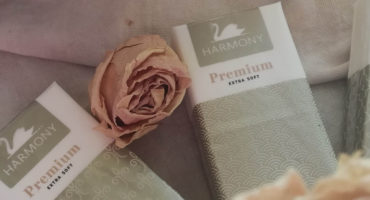Tears of Sadness, Tears of Joy

Every newborn starts its life with a strident cry. In the first few months, they spend two hours a day crying. And for a variety of reasons we cry naturally throughout our lives. It is characteristic of an adult in response to very strong emotions. Whether it is sadness, joy, or anger. What kind of tears we have, why we cry and other interesting things can be found in our new article.
Not all tears are the same
Tears are 99% composed of water. Less than 1% are salts and they also contain glucose, antibodies and lysozyme, which are enzymes with antibacterial effects. In fact, we have three types of tears that differ in their function and, to some extent, in composition.
Basic, or basal, tears are made in small quantities all the time, and in combination with blinking, their task is to moisturize the eye and protect it from dirt. After mechanical or chemical irritation (for example, when cutting onions), reflex tears are released, in order to clean the eye.
The third type of tears is unique to humans, they are emotional tears. They are connected with intense experiences and emotions – grief, joy, anger, mental stress, but also empathy or compassion. In addition, with the emotional tears, various hormones are released in the body and can relieve a person from his or her unpleasant situation.

Why do we enjoy sad movies?
Gloomy weather, feeling under the weather, a bad week or some daunting event. All we want to do in these moments is to crawl under the blanket and cry watching a dramatic movie with a heartbreaking plot. The proof is undoubtedly the number of these types of movies that film directors supply us with.
But why do we want to watch such movies over and over again, even though we know we’re going to shed a lot of tears watching them regularly? Studies have clearly shown that we release certain hormones, especially endorphins and oxytocin, watching these films. Thanks to endorphins we are relieved and our mood improves. Oxytocin is a hormone that stimulates empathy and social convergence.
While watching these films, we also realize that not everything is black and white in our lives, and we are grateful for what we have. Some sociologists argue that by watching sad movies, people become more empathetic and at the same time their pain tolerance increases.
Wipe your tear elegantly
The history of crying is actually connected with the emergence of handkerchiefs. The idea originated in France and is attributed to the French queen Maria Antoinette, who often missed her home in Austria and used a piece of cloth to wipe her tears. Handkerchiefs got their paper form in the 20th century, and today we can blow and wipe tears in many elegant packs, containing shea butter handkerchiefs or delicate women’s or men’s fragrances.

Handkerchiefs Gentlemen’s Light Perfumed are characterized by soft and delicate male perfume
What you may not know about crying
- Newborns can cry excellently in the first weeks, but they are not shedding any tears. They do not yet have sufficiently developed lacrimal canals.
- Average crying is in most cases less than five minutes. But women cry more often and longer than men.
- Retention of crying can be harmful to your health. Not only do we feel worse mentally, but with suppressed emotions, we can also increase our blood pressure and the risk of heart disease.
- To prevent unstoppable crying when cutting onions, briefly chill, boil or soak it in water. This will disrupt the activity of the enzymes that break down the substances causing eye irritation.
- Newborns of different nationalities can be recognized by crying. Babies are trying to imitate the melody of their parents’ voices. Thus, French cries tend to have a rising melody, while the German cries tend to have a falling melody.
Forget about the cleaning or Where to go for a trip?
Maybe you are familiar with this. You get up in...
Show moreFrom the history of handkerchiefs
Raise your hand those who do not take handkerchiefs for...
Show more5 sad movies you´ll need handkerchiefs for
What kind of stories make even the strongest people cry?...
Show moreGet inspired: 10 bathroom designs
What’s your dream bathroom? With a huge freestanding bathtub and...
Show more
 facts
facts


